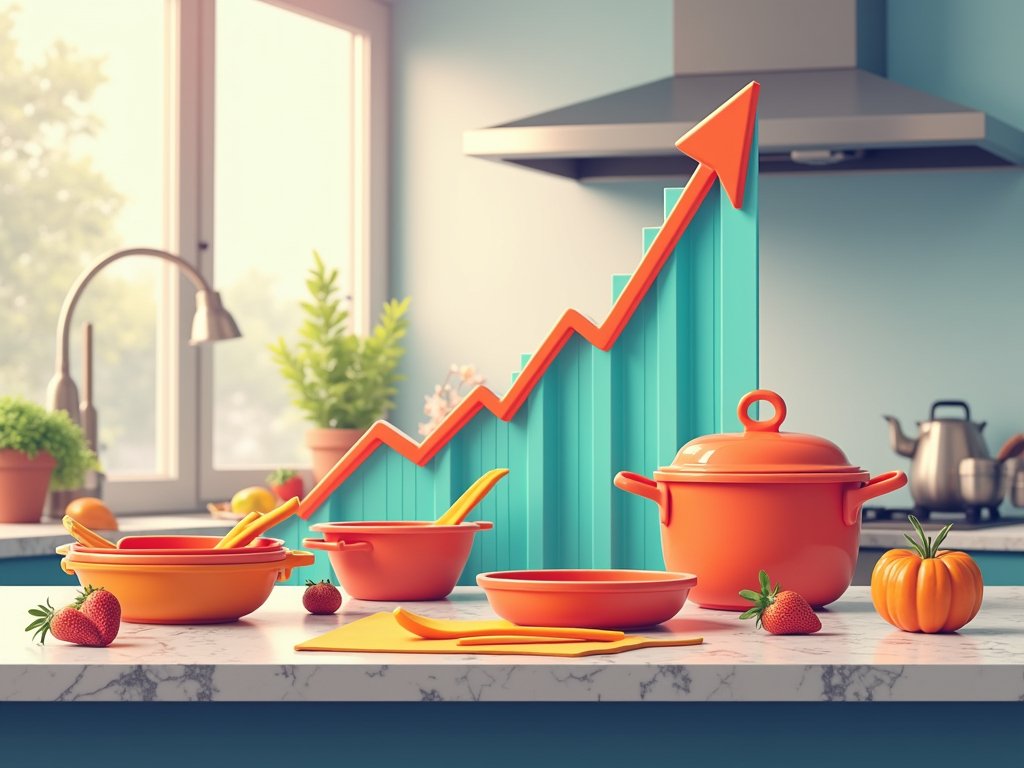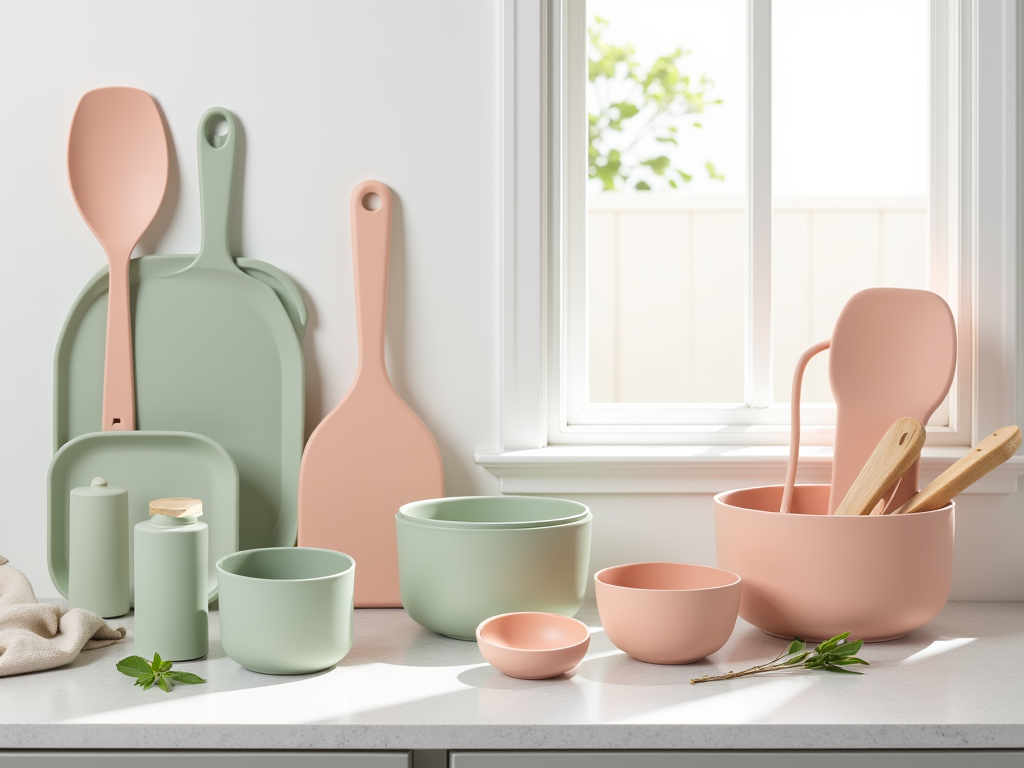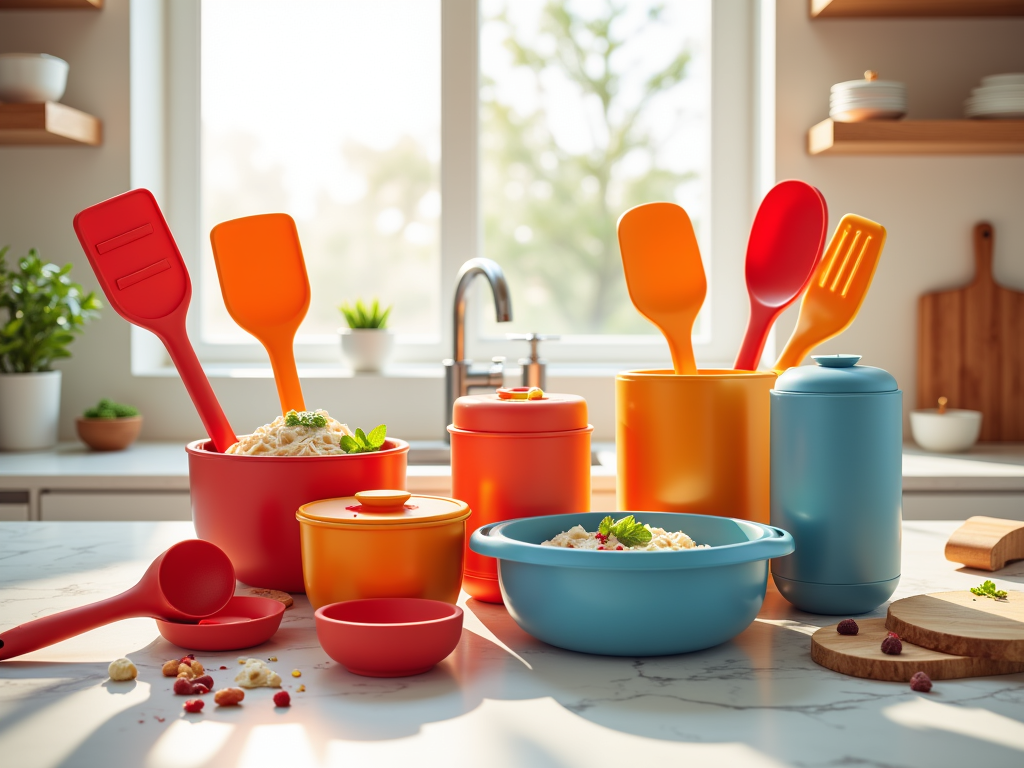The global silicone kitchenware market is experiencing unprecedented growth as consumers increasingly demand eco-friendly, durable, and multifunctional kitchen products. Industry analysts project the market to reach $4.27 billion by 2025, with a steady 7.5% CAGR. For B2B manufacturers and suppliers, understanding key trends and positioning strategically will determine success in this high-potential sector.

Table of Contents
ToggleSustainability & Eco-Friendly Materials
By 2025, food-grade platinum silicone will become the industry gold standard. Unlike conventional silicone, platinum silicone is free from BPA, lead, and phthalates while offering extended durability. The EU and North American markets are imposing stricter regulations on low-cost silicone products with fillers.
Action Tip: B2B manufacturers should prioritize FDA, LFGB, and other international certifications while highlighting eco-friendly attributes in product documentation. Consider developing biodegradable silicone blends for premium markets.
Multi-Functional & Modular Designs for Commercial Use
The foodservice industry demands space-saving, versatile silicone products. Top 2025 products include:
- Collapsible silicone steamer + colander combos
- Modular silicone storage systems (compatible from fridge to oven)
- All-in-one silicone baking trays with carrying handles
Supplier Opportunity: Customizable modular silicone solutions with branded logos can increase client retention and order volumes.

Breakthroughs in Antimicrobial Formulations
Silicone products infused with nano-silver ions or natural antimicrobial agents are gaining traction in healthcare catering, baby products, and commercial kitchens. Tests show these reduce surface bacteria by 99.7%.
B2B Selling Point: Emphasize antimicrobial properties with data-backed claims when targeting hospitals, schools, and hygiene-sensitive institutions.
Color Psychology-Driven Design Innovations
Market research reveals:
- Soft Morandi tones boost home kitchenware conversions by 15-20%
- High-contrast bright colors appeal more to professional chefs
- Regional color preferences vary (e.g., Middle Eastern buyers favor gold & emerald green)

Procurement Factor: Wholesale buyers increasingly demand Pantone-level color options and region-specific customization.
Regional Market Differences & Procurement Preferences
| Region | Price Sensitivity | Popular Products | Certification Needs | Procurement Cycle |
|---|---|---|---|---|
| North America | Medium-Low | High-tech silicone tools | FDA, NSF | Quarterly |
| EU | Low | Eco-friendly, traceable | LFGB, REACH | Annual contracts |
| Southeast Asia | High | Basic silicone kitchenware | ISO, Halal | Monthly spot orders |
| Middle East | Medium | Luxury design sets | GCC standards | Seasonal (pre-Ramadan) |
Strategies for Manufacturers to Dominate B2B Markets
- Build a Resilient Supply Chain
- Establish dual production bases in Southeast Asia (low-cost) and Europe (high-quality).
- Partner with local silicone raw material suppliers for stable sourcing.
- Digital Showrooms
- Implement AR/VR product demos to reduce cross-border sample shipping delays.
- Data-Driven Product Development
- Leverage Amazon B2B and Alibaba search trends (e.g., “silicone air fryer accessories” grew 320% YoY in 2023).
- Tiered Customization Options
- Basic: Logo + color customization
- Intermediate: Shared mold development (MOQ 50,000 units)
- Advanced: Co-developed patented products (long-term contracts)
Cost Optimization & Pricing Strategies
Savvy procurement managers will focus on:
- Mold-sharing programs (multiple buyers split costs)
- Seasonal discounts (Q2 typically offers 3-5% flexibility)
- Logistics innovations (foldable packaging reduces shipping volume by 30%+)
B2B suppliers should provide volume-based pricing tiers (50K, 100K, 200K units) to help buyers calculate ROI.
Future Innovations Beyond Silicone
Leading manufacturers are exploring:
- Silicone-bamboo fiber composites (enhanced biodegradability)
- Magnetic silicone bases for induction cooktops
These innovations will create new product categories and reshape B2B competition. Buyers should partner with R&D-driven manufacturers early to secure a future advantage.

Conclusion
For B2B businesses aiming to lead the 2025 silicone kitchenware market, now is the time to act. By leveraging trend insights, high-value product lines, and agile supply chains, manufacturers can secure long-term contracts and dominate this booming industry.
